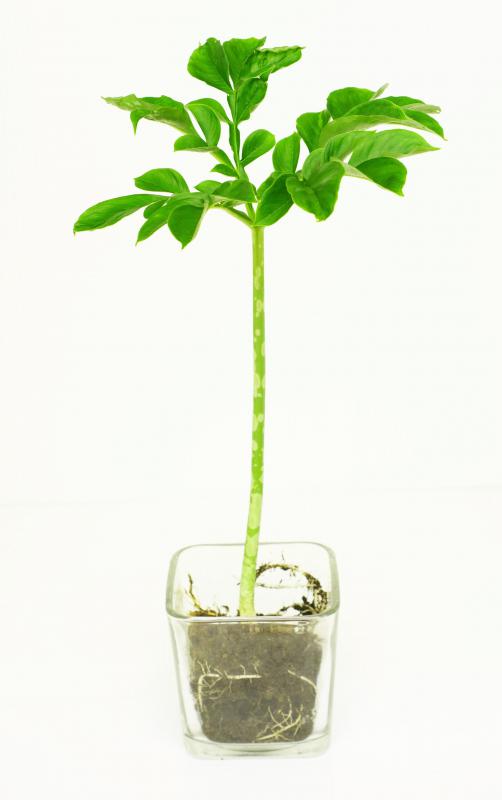At DelightedCooking, we're committed to delivering accurate, trustworthy information. Our expert-authored content is rigorously fact-checked and sourced from credible authorities. Discover how we uphold the highest standards in providing you with reliable knowledge.
What Are Konjac Noodles?
Konjac noodles are a pasta-like food created from the bulbous corm of the konjac plant. They were first developed by cooks in China and are prevalent in many Asian cuisines. The konjac corm from which the noodles derive is highly fiberous, contains no carbohydrates, and is a zero-calorie food. Konjac noodles do not generally taste like wheat-based pasta, but they often closely resemble it and can be used interchangeably with it in many recipes. Cooks around the world praise konjac noodles for their health properties and generally “guilt-free” nature.
In China, where they are believed to have originated, konjac noodles are called either moyu or juruo. Japanese chefs refer to them as konnyaku or shirataki. All four of these words describe the same basic concept: a noodle formed from konjac, usually in powdered form.

The fiber-rich konjac corm, which looks like a giant root, does not have a defined taste, but neither does it have any nutrients or calories. It is little more than soluble fiber known as glucomannan, which cooks can grind down into a powdered base that can be used for a great many foodstuffs. In noodle preparation, the powder is usually mixed with water, then formed into glossy strands. If packed in liquid, these strands can be immediately sold as noodles. Otherwise, they are slowly roasted to dehydrate them, then packaged as a dried food.

Wet konjac noodles are ready to eat straight from the package. Cooks usually elect to warm them up, but no cooking is required. Even dried versions do not need cooking, only reconstituting. Setting konjac noodles in a bowl of tepid water will usually bring them back to full springiness in matter of minutes.
Eating konjac noodles plain is not usually desirable, if for no other reason than that they have basically no taste. Their texture is often a bit jellied, as well. Most konjac noodle dishes call for a variety of sauces, spices, and additives. In Asian cuisine, chefs often use them in stir fries and noodle soups. The konjac noodle is a very flexible ingredient that can be used in a wide variety of dishes and preparations.
In some places, these noodles are marketed and sold as “miracle noodles.” This appellation derives largely from the noodles’ zero-sum nutritional content: they are soluble fiber, and very little else. They also tend to expand slightly in the stomach, which can trigger feelings of fullness that can lead to less eating and, ultimately, weight loss. Dieters must take care not to negate the caloric emptiness of the noodles with heavy sauces and toppings, however.
AS FEATURED ON:
AS FEATURED ON:












Discussion Comments
@Pippinwhite -- Definitely rinse them in hot water the first time you try them. That's a must. Even if I'm using them in a cold salad, I rinse them in cold water.
They are a little different, no question, but I'm also watching my diet, and being able to eat noodle dishes without worrying about the calories, fat and carbs in the pasta is great.
They're best with something, since they don't have much flavor of their own, and the texture is a little weird. I'm willing to overlook a little weird if I can have pasta, though. The ones with tofu in them have the best texture, in my opinion.
Somehow, I have missed these as a pasta substitute! I am diabetic and always on the prowl for something to use instead of regular pasta. I saw something about these noodles online a few days ago and I was so excited!
I have to try these. I saw comments from people who said they're best when they are rinsed in hot water, because they can have kind of an odd smell or flavor that some people may not like. I think I'd have to rinse them, just on general principles. I can't wait to get some and try them in pasta dishes. I'm betting they're a pretty decent substitute for rice in some dishes, too.
Post your comments